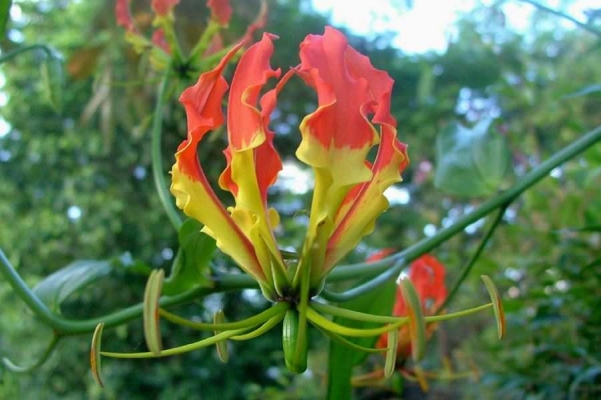General Information
Glory lily is also known as African climbing lily belongs to family Liliaceae. It is also known as Agnishikha, Agnimukhi and Garbhaghatini in Sanskrit.Its rhizomes and seeds contained, alkaloids colchicine and superbine. Colchicine is used for treatment of gout, rheumatism etc.Also rhizomes are used against snake and scorpion bites. Leaf juice is used against head lice.
In India, Central India, Tamilnadu, Andhra Pradesh, Karnataka and West Bengal are major glory lily growing states. In Andhra Pradesh, it is taken as kharif crops as well as irrigated crops.







